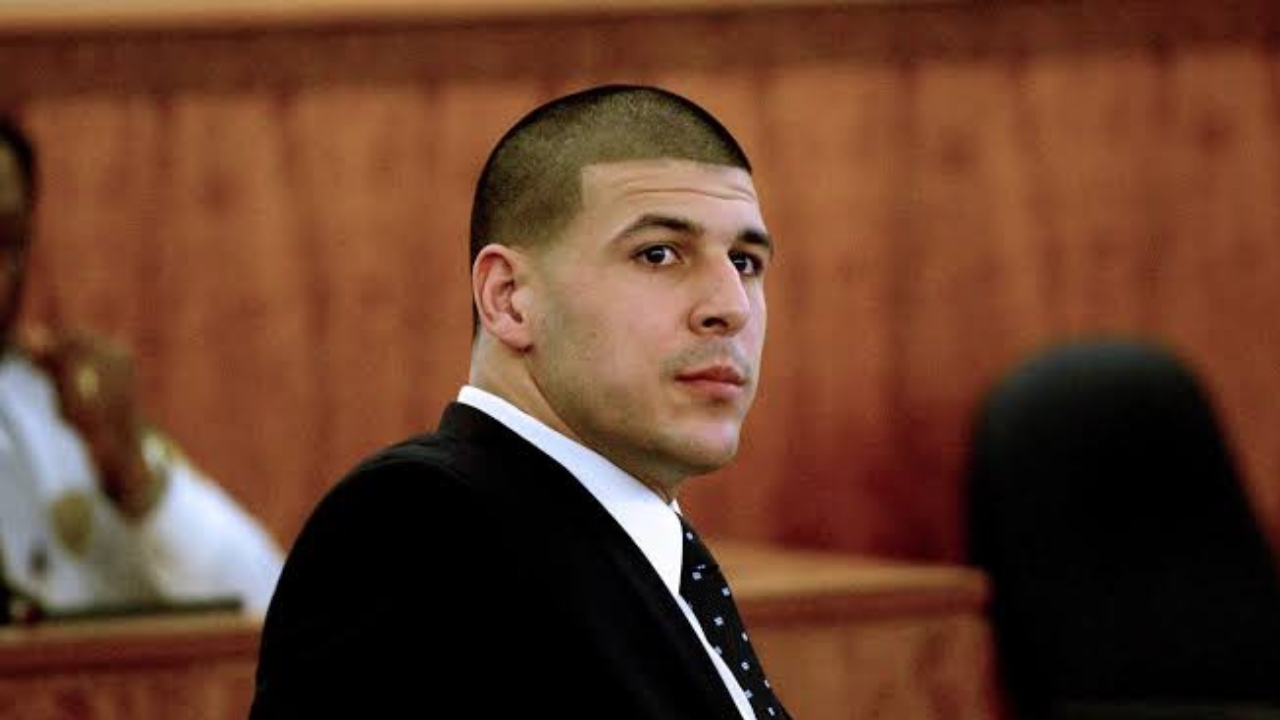Aaron Hernandez was a promising NFL player who ultimately became a convicted murderer, his life marked by personal turmoil, legal troubles, and an untimely death that shocked the world.
Once regarded as one of the most talented tight ends in the NFL, Hernandez’s career with the New England Patriots took a dark turn when he became entangled in multiple violent incidents, culminating in his conviction for the 2013 murder of Odin Lloyd.
Hernandez’s troubled upbringing played a significant role in shaping his future. Raised in Bristol, Connecticut, his father, Dennis Hernandez, was reportedly abusive, and there were allegations that Aaron was sexually molested at a young age.
These formative years, compounded with a complex relationship with his sexuality, created a volatile foundation that would contribute to his later actions.
Despite his personal struggles, Hernandez excelled in sports, earning a scholarship to the University of Florida and, eventually, being drafted by the Patriots in 2010.
However, his off-field behavior was increasingly erratic. During his time at Florida, Hernandez was involved in several violent incidents, including a shooting in 2007, although he was not convicted.
Also Read: What Happened to Delonte West? Details of LeBron James’ Former Teammate’s Arrest Explored
His substance abuse, including heavy use of marijuana and PCP, further deteriorated his mental state.

Hernandez’s behavior became more paranoid and aggressive, and he became involved in a series of violent crimes.
The tipping point came in June 2013, when Hernandez was arrested for the murder of Odin Lloyd, a semi-pro football player and the boyfriend of Hernandez’s fiancée’s sister.
Security footage linked Hernandez to the crime, and evidence found at his home further implicated him.
The murder may have been motivated by the fear that Lloyd had discovered Hernandez’s bisexuality.
Hernandez was convicted of first-degree murder in 2015 and sentenced to life in prison without the possibility of parole.
Hernandez’s legal troubles did not end with the Lloyd case. He was later linked to the 2012 double homicide of Daniel de Abreu and Safiro Furtado.
Though he was acquitted of the double murder charges, the case further tarnished his reputation.
In a shocking twist, it was revealed that Hernandez had allegedly shot his close friend, Alex Bradley, to prevent him from becoming a witness in the double homicide case.
The final chapter of Hernandez’s story came in April 2017, when he was found dead in his prison cell, an apparent suicide. His death, at the age of 27, occurred just days after he was acquitted of the double murder charges.
Due to the legal doctrine of “abatement ab initio,” Hernandez’s conviction for the Lloyd murder was vacated posthumously. However, the debate over whether he knew this when taking his life remains unresolved.
A postmortem examination revealed that Hernandez suffered from severe Chronic Traumatic Encephalopathy (CTE), a degenerative brain disease linked to repeated head trauma.
CTE is known to cause mood swings, violent behavior, and impulsivity, and it has been found in many former NFL players.
This diagnosis has led to further discussions about the long-term effects of playing professional football and the potential link between brain injuries and violent behavior.
Aaron Hernandez’s life and crimes have been the subject of intense public fascination and media scrutiny.
Also Read: What Happened To Val Kilmer’s Health? His Battle With Cancer & How He’s Feeling Now
His rise from a star athlete to a convicted murderer, combined with his tragic death, has made his story a somber cautionary tale about the hidden toll of fame, mental health, and violence in the world of professional sports.
His legacy is now intertwined with both his athletic prowess and the devastating crimes he committed.














